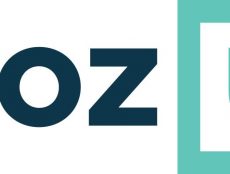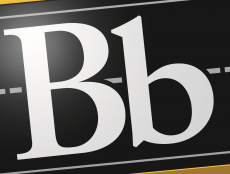
Articles
Editor’s Picks
Higher Education
A Columbia Teachers College Study Explores Who is Taking MOOCs and Why
By Cait Etherington
November 24, 2018
A new study released by the Center for Benefit-Cost Studies of Education (CBCSE) at Columbia University’s Teachers College suggests that MOOC learners are generally well-educated, employed, and between the ages of 30 and 44. The study also reveals that most MOOC participants are enrolling to improve their current performance at work and opting to pay for their courses rather than audit. Somewhat surprisingly, few respondents indicated that their employers were footing the bill for their MOOCs or compensating them for time spent reskilling and upskilling.
Methodology and Respondent Profile
This CBCSE study, led by Fiona Hollands and Aasiya Kazi, began in 2017 by gathering information on learner’s earnings, education levels, and career status through a voluntary online survey. In the end, the researchers received over 3,0o0 responses from students enrolled in six Coursera Specializations and four edX MicroMasters offered by public and private universities in the United States between February 2017 and August 2018. The Specializations includes those in business, as well as several MicroMasters areas.
In addition, as reported in Benefits and Costs of MOOC-Based Alternative Credentials, across all programs, 49% of the learners were male, 49% were female, and 1% identified as neither. In terms of racial background, 14% of the learners identified as Hispanic and another two-thirds identified as White or Asian. In total, 18% of the survey respondents did not respond to the race question at all.
It is also important to note that the respondents were from around the world. Across the 10 programs surveyed, respondents lived in 154 different countries. The largest concentration of respondents were from the United States (25%), but Indian respondents accounted for 12% and respondents from Brazil, Nigeria, and Canada were also well represented 3% per country.
Key Findings
MOOCs Are Attracting Highly Educated Learners
Among the key findings of the CBCSE survey was a confirmation that MOOCs continue to attract a generally educated demographic. As stated in the report, “In general, learners were quite well educated with 79% holding at least an undergraduate degree and 40% a graduate degree.” However, the study also found, “16% of participants across all programs had no degree at all, although half of these had completed some university or college courses.”
Coursera Is Attracting Higher Educated Learners Than edX
Notably, all programs attracted a relatively low number of participants with an associate’s degree only, but the report did find that people pursuing Coursera specializations were more likely to have a graduate degree than people pursuing an edX MicroMasters.
Most Learners Enroll in MOOCs to Improve Their Performance in a Current Job
The vast majority of learners are enrolling in MOOCs to improve their performance in a current job (44%). A much smaller percentage (27%) enroll to help start their own business. A notable percentage (11%) enroll to increase chances of a job promotion and another 9% enroll in hopes of getting a raise. Another major reason people enroll in MOOCs is to improve their English language skills; a total of 11% of respondents indicated that this was an “expected benefit” of enrolling in a MOOC.
A Majority of Learners Are Willing to Pay for MOOCs
Although some MOOCs are still free, both on the Coursera and edX platforms, participants must pay to earn a Specialization or MicroMasters credential. Specializations currently cost $39-$79 per month while MicroMasters are fixed price and range from $540 and $1500. Despite the cost, most learners were paying for their courses (56%). A small number were receiving financial aid from Coursera or edX (7%) and an even smaller number of respondents indicated that their employer was helping out (4%). Only 2% of respondent indicated that their employers were paying for them to spend time completing a Specialization or MicroMasters.
Two Follow-Up Surveys Are Planned
Principle investigators Fiona Hollands and Aasiya Kazi note that the current survey is only the first of three surveys participants in the 10 programs in question will be invited to complete. A second survey will be issued when they earn their credential, and a third survey will be distributed a year later “to assess actual rather than expected changes in education, earnings, and career status since completing the credential.” Whether the subsequent surveys yield enough data to draw any conclusions, however, is yet to be seen. Hollands and Kazi admit that “the second, or end-of-program, surveys have been embedded in the final courses of some programs but, to date, the response rate has been low.”









Tengo 13 Años estudiante en Houston,Texas.Yo creo que nos tienen que dar una oportunidad a nos otros los que apenas somos adolescentes.Yo creo que nosotros somos capacitados de hacer estos cursos online.Muchos no nos ven capacitados creen que solo jugamos pero, hay otros que si les importa para su futuro aprender.Gracias,y quiero que tomen my comentario como una posibilidad.
[…] 10. Winners of the 2018 Blackboard Catalyst Awards […]
[…] 1. Winners of the 2018 Blackboard Catalyst Awards […]
[…] 11. Winners of the 2018 Blackboard Catalyst Awards […]